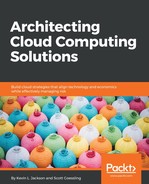Data virtualization is used to retrieve and manipulate data without requiring the related technical data details like format or location (federated/heterogeneous data joins). Abstracted technical include API specifications and access language. This option can facilitate connections to heterogeneous data sources making all data accessible from a single location. Data federation can also be accomplished with data virtualization by using it to combine data result sets across multiple sources. When operational data and processed/cleansed data is needed to support of real-time data requirements, data virtualization software is used for data integration, business process integration, service-oriented architecture data services, and enterprise search is ideal.
In a cloud computing environment, data virtualization decouples data analytics and applications from physical data structures. This minimizes end-user impact if data infrastructure is changed. Another cloud use is linking between NoSQL sources and relational data sources.
Cloud solution architects should always architect with an enterprise view. With evolving organizational data virtualization requirements, these solutions can become less agile and deliver lower performance as more layers and objects are added. Duplicate business logic and dependencies may also affect performance. In mitigating these challenges, the cloud solution architect should design a layered view approach that isolates business logic. Always use consistent naming standards and common rules for reusability and layer isolation and push down processing requirements to the source as much as possible.
With data virtualization serving a gateway into corporate data assets, it should be governed as such. Data virtualization concepts and capabilities must also be implemented consistently across the enterprise. Data security will strongly impact data virtualization security management so data security managers should determine applicable regulatory guidance (such as HIPAA, SOX, and so on). In many situations, data virtualization should be used to limit access for specific users or user groups.

Many data virtualization tools can be used to display and export data lineage information. This forms an important component of business process metadata. This tool can can be used to analyze and resolve data quality issues. Data virtualization is a powerful technology, but enterprise governance that balances data management structure, data virtualization uptake, and innovation must be in place.

